Baja California, despite proximity to the US and recent rampant growth, remains a wild and untamed coastal desert paradise. Behind the charming pueblitos and peaceful resorts lies a varied history, where conquest and development have moved both slow and fast. Following a trip to the Gulf of California town of Loreto, this first in a series of articles attempts to define what makes the place special, as well as what the future holds for this (mostly) hidden resort region.
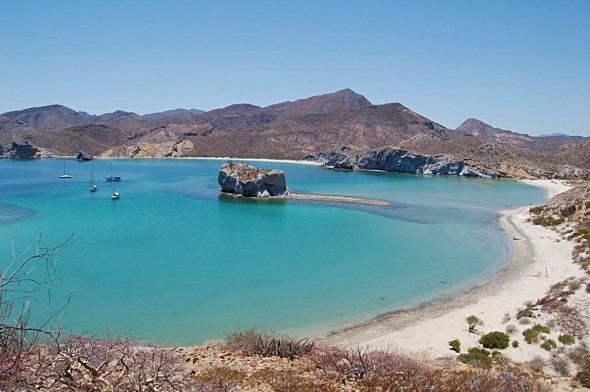

Arid Mountains, Rugged Coastline Kept the Spaniards and Gringos at Bay
The Baja California peninsula, despite rampant growth in tourism, retains the spirit of primordial “Earthly paradise” of California, stumbled upon by the gold-fevered Spaniards almost 500 years ago. This isolated wilderness persists through time, set between two thousand miles of mostly uninhabited Pacific and Sea of Cortés coastline, as the world beyond, airplanes, yachts, time-share condominiums, slowly discover these riches. The arid mountains and windswept Baja desert of cholla and pitahaya cactus, crossed by a few winding two-lane highways, have so far kept the resort sprawl at bay. But ever since the arrival of Spaniards centuries ago, big ideas and gross overstatements have directed the development of the arid peninsula.
“Know that on the right hand from the Indies exists an island called California very close to a side of the Earthly Paradise; and it was populated by black women, without any man existing there, because they lived in the way of the Amazons. They had beautiful and robust bodies, and were brave and very strong. Their weapons were golden and so were the harnesses of the wild beasts that they were accustomed to domesticate and ride, because there was no other metal in the island than gold.” – García Ordóñez de Montalvo, in the Spanish romance novel, “Adventures of Esplandián,” for which the Californias were named.
A case in point is Loreto, a Gulf of California mission town dating back three hundred years, with dreams of ecotourism for its deserted beaches and sheltered bays. The desert somnolence shares the land amicably with the occasional unfinished golf resort and aborted marina project. Yet, since the completion of the Trans-Peninsular Highway in 1973, massive unchecked growth has transformed unique and fragile areas of the peninsula, such as the white sand beaches of Los Cabos into one of Mexico’s top tourist resorts. The same development machine also had big plans for Loreto, but alas, not yet.
STORY: Corazón Vaquero: Last of the Californio Cowboys of Baja California
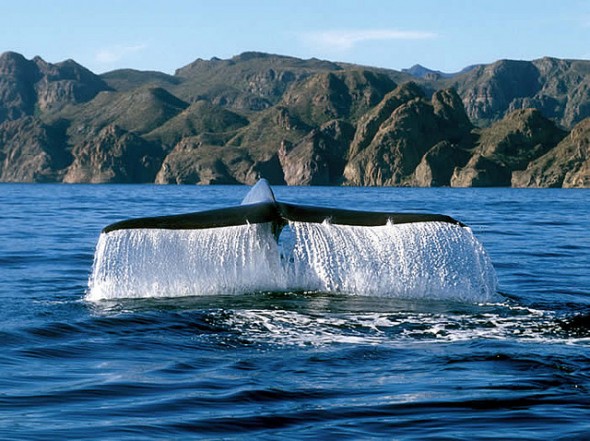

Baja California Paradise, A Natural Bounty, Isolated, Biodiverse, and Untamed
The Gulf of California (also called the Sea of Cortés) supports a third of the world’s marine cetacean species (such as whales and dolphins) — including the endangered blue whale, the largest mammal and possibly the largest animal ever. It has 891 species of fish swim its waters, attracting fishermen from all over the world. The blending of the Baja and Sonoran desert eco-regions boast 695 vascular plant species — including some of the tallest cacti in the world at more than 25 meters — and hosts 181 species of birds. While precipitation is scarce, the Gulf Coast receives moisture from tropical storms and nearby mountains that create arroyos and underground streams. The peninsula’s isolation is responsible for the high levels of biological diversity endemic only to this region.
Loreto, Historic Capital of the Californias
Loreto, the historic first capital of all the Californias (Baja Sur, Baja Norte and Alta), provides an excellent point to explore the rugged backcountry, blooming with ocotillo, palo blanco, and cardon cactus among the jagged peaks of the Sierra de la Giganta. Only a few remnant populations remain of the original native cultures dating back 11,000 years (Cochimí, Guaycura, and Monquí). The indigenous people were nomadic hunter-gatherers who harvested a wide range of natural resources from the Gulf shores and interior valleys. They thrived without formal agriculture, living in autonomous local communities that often fought with each other.
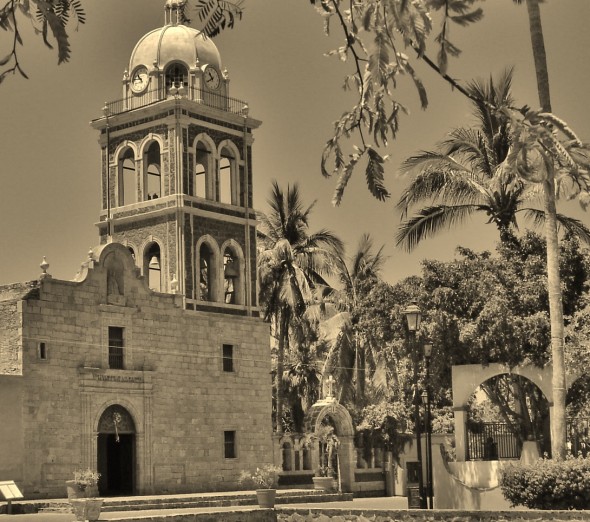

Some of the world’s most outstanding collections of rock paintings can be found in the region of the Sierra de San Francisco in the El Vizcaino reserve. They remain remarkably well-preserved as testament to the highly sophisticated culture existing in the region possibly dating back 7,500 years and are now preserved as a UNESCO World Heritage Site.
“In October 1697, a small ship named Santa Elvira left an open anchorage near the mouth of the Yaqui River in Sonora, sailed to the peninsula that lay a hundred miles to the west, and landed ten men, led by the Jesuit missionary, Juan María Salvatierra. This least impressive of armies had come to stay. It was the vanguard of a small group destined to conquer California.” — Harry Crosby, “Antigua California: Mission and Colony on the Peninsular Frontier, 1697-1768.”
STORY: Kumeyaay People: Traditions Survive in Baja California
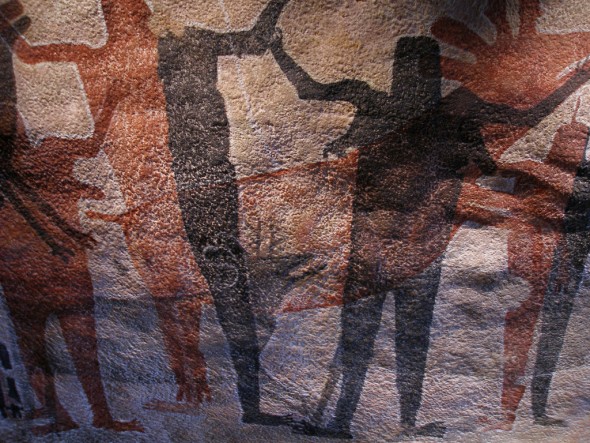

The Spaniards arrived as early as 1533 but experienced repeated failures to colonize, nor find the promised mineral wealth. Despite Cortés claiming the “Island of California” for Spain in 1535, for the next 150 years the native people remained unsubdued and unconverted. In 1697, the Jesuit missionary Juan María Salvatierra established Misión Nuestra Señora de Loreto Conchó, the first of 16 permanent missions on the peninsula.
Lest we get carried away about the “noble” interests of the Society of Jesus with regards to the life and culture of the indigenous of Baja California, this passage from Jesuit Administrator Miguel Venegas, describing a people he had never personally encountered: “Their insensible stupidity, lack of knowledge, and reflection: the inconstancy and fickleness of the will and appetites without restraint, without light and even without purpose: laziness and horror to all work and fatigue: perpetual adherence to all the lineage of childish pleasure and brutal entertainment: the pusillanimity and weakness of mind: and finally, the miserable lack of all qualities of cultured humanity, that is, rational, political and useful to himself and society.”
The Jesuit missions played an integral role in the Christianizing of the indigenous peoples. However, to accomplish their objectives, the missionaries resettled and congregated many of their converts in rancherías located proximate to the missions. Although effective in enforcing religious instruction, tribute collection, and the organization of a work force, the concentration of the natives had a devastating effect on the aboriginal groups and made them more susceptible to smallpox, typhus, measles and other infectious diseases.
STORY: Kuuchamaa: The Exalted High Place of the Kumeyaay
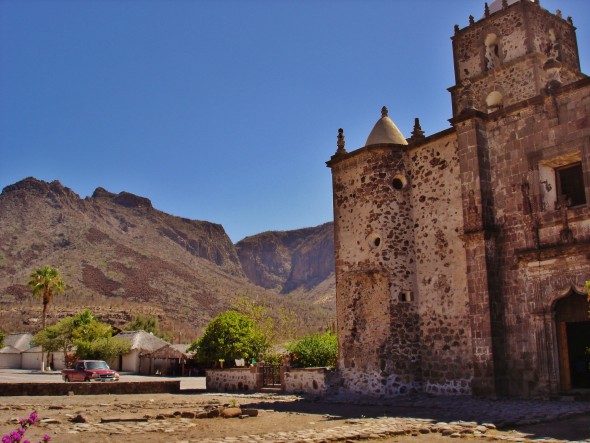

Dissolution of the Baja California Jesuit Missions
The most serious blow to the indigenous populations was the typhus epidemic of 1742-1744, which probably killed 8,000 Indians. During the following decades, entire tribes disappeared, while small bands of Pericú, Guaycura, and Cochimí struggled to survive in the south. In June 1767, King Carlos III of Spain expelled all the Jesuit missionaries from México. Eventually, the Dominicans continued the missionary efforts of the Jesuits, especially in the Northern Baja territories of the Cochimí, Kiliwa, Paipai, and Kumeyaay. Southern and Central Baja populations had then declined to the point of no return, and culturally distinct aboriginal populations disappeared before 1900.
After the Jesuit dissolution, the missions were left in a sorry state. According to Harry Crosby, “The mission ideal, translated all over the Americas by men with the best intentions, brought converts to the edge of Hispanic society, but never taught them to create a place for themselves within it.” Nevertheless, the Californios who survived the conquest and dissolution of the missions, rural people living off the unforgiving desert, will be the focus of the next installment. For now, enjoy a clip of a documentary that celebrates the beauty of life today in the interior of Southern Baja.
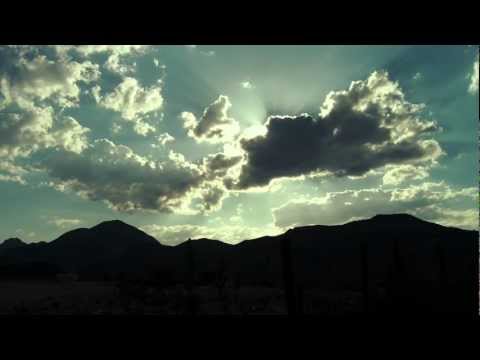
Watch this video on YouTube
Los Otros Californios, A documentary filmed in the mountains, deserts and ranches of Baja California Sur. Dirección: César Talamantes, Fotografía: César Gutiérrez Miranda, Música: José Navarro, Producción: IMCINE / Talamant Pictures
A conference of the Outdoor Writers Association of California (OWAC) convened in Loreto, Baja California Sur, with cooperation from the good people of the small town on the Gulf of California. Thanks to Trudi Angell of Paddling South, who does trips to San Javier Mission and pack tours to the Sierra San Francisco.
Updated 27 March 2021









Pingback: Baja California
A cidadeTrancoso no Sul da Bahia realmente e um pequeno paraiso. Eu adoro caminhar pelo quadrado na parte de tarde e beber um caipirinha em um restaurantes lindas com vista para a igreja e o mar lindo.
Pingback: Yosemite: An Ecosystem Nourished By Wildfire | WilderUtopia.com
Pingback: Corazón Vaquero: Last of the Californio Cowboys of Baja California | WilderUtopia.com
Pingback: Kuuchamaa: The Exalted High Place of the Kumeyaay | WilderUtopia.com
Pingback: Kumeyaay People: Traditions Survive in Baja California
Pingback: Old Town Auburn, Portrait of a Gold Rush Town